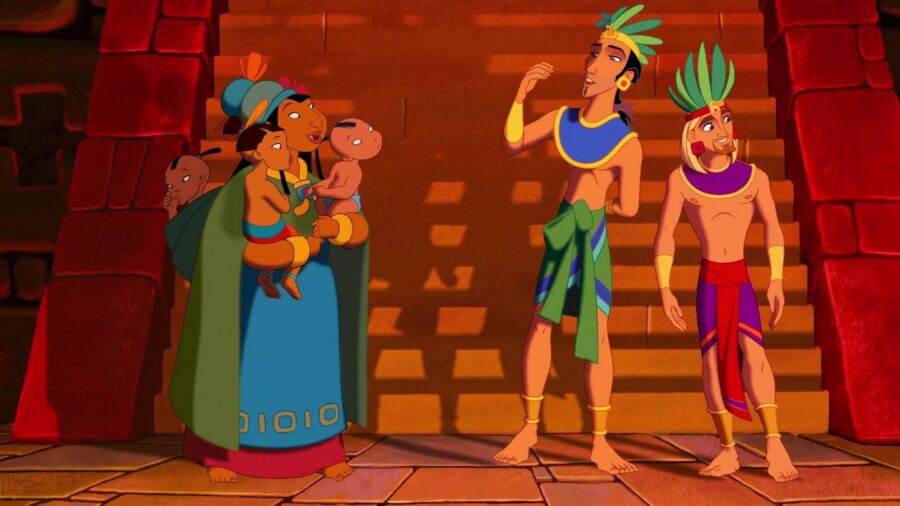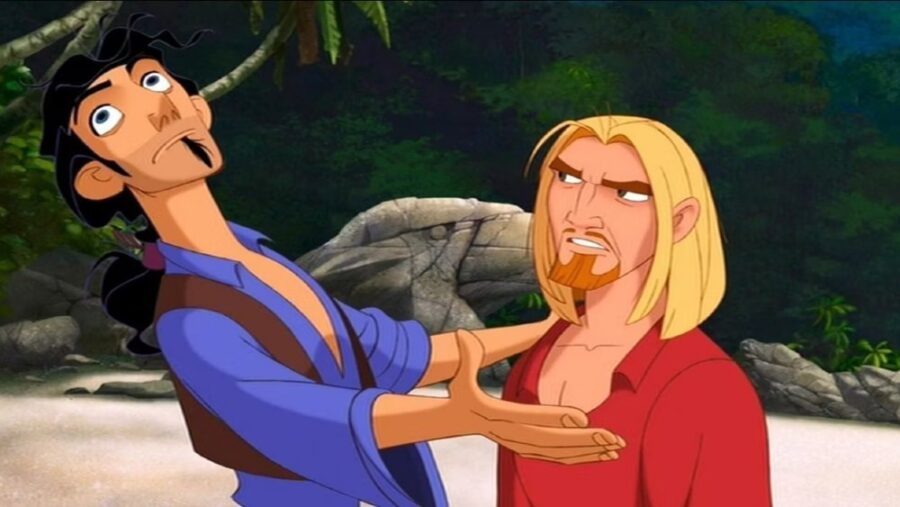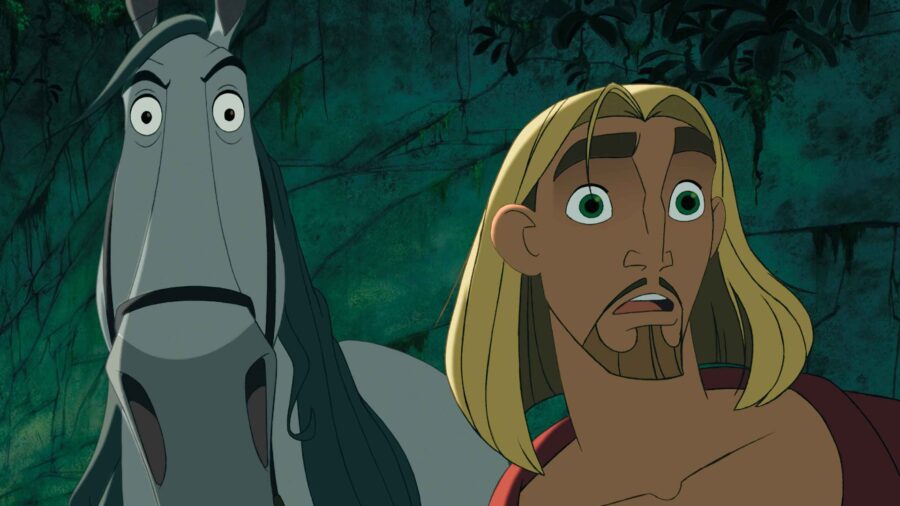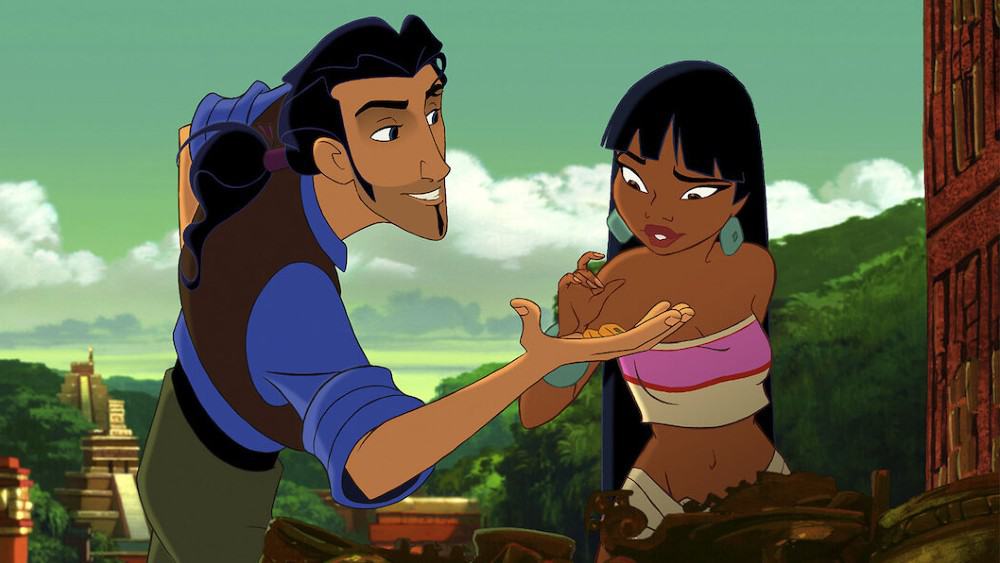
Once upon a time, the only feature-length animated movies shown in theaters were produced by Disney. And even when they weren’t, everyone still thought they were—kind of like how your grandparents call every gaming system in existence “Nintendo.” DreamWorks’ The Road to El Dorado, streaming now on Netflix, was no exception.
The DreamWorks animated classic The Road to El Dorado is streaming on Netflix.
It’s possible that some fans still believe that Disney is responsible for the PG-rated The Road to El Dorado despite the film’s decidedly more risque tone than that of its G-rated contemporaries. DreamWorks wouldn’t establish itself as the Rolling Stones to Disney’s The Beatles until 2001, when Shrek singlehandedly put the studio’s animation division on the map—a full year after El Dorado.
The Road to El Dorado stars Kevin Kline as Tulio and Kenneth Branagh as Miguel, a pair of lovable scoundrels who never met a scam they didn’t like. The two rogues come across a map allegedly leading to the lost city of gold, El Dorado, and what follows is a wacky adventure where the two men leave Spain and end up in the New World. There, they meet an attractive indigenous woman by the name of Chel (Rosie Perez) and are mistaken for gods by the people of El Dorado.

The Road to El Dorado was released by the nascent DreamWorks in 2000 as an attempt to cut into Disney’s theatrical animation dominance. Previously, the only ones brave enough to go up against the big D at the box office were toy properties—Transformers, Care Bears, G.I. Joe, Rainbow Brite, etc.—the occasional adult-themed animated film like 1981’s Heavy Metal or the works of Ralph Bakshi, and ex-Disney employee Don Bluth.
Of those pre-DreamWorks contenders, only Don Bluth managed to make a dent in Disney’s iron grip on theatrical animation with modest hits like An American Tale, All Dogs Go To Heaven, and Anastasia.
The screenwriters envisioned the main characters as “comedic anti-heroes who would set out to find the Lost City of Gold after acquiring a map to its location.”
Despite knowing that The Road to El Dorado would probably either tank at the box office, be mistaken for a Disney movie, or both, DreamWorks forged ahead with the film. Ironically, the germ of the idea that would become The Road to El Dorado started with ex-Disney CEO Jeffrey Katzenberg, the “K” in Dreamworks SKG.
Katzenberg gave screenwriters Ted Elliott and Terry Rossio a copy of the Hugh Thomas book Conquest: Montezuma, Cortes and the Fall of Old Mexico in 1994 while expressing his desire to make an animated film set during the Age of Discovery.
Early the following year, Elliott and Rossio had written a story treatment based on the old Bob Hope and Bing Crosby Road to… films. The screenwriters envisioned the main characters as “comedic anti-heroes who would set out to find the Lost City of Gold after acquiring a map to its location.”

The film was initially set to be directed by Will Finn and David Silverman, who were under the impression that they were making a PG-13 film complete with the appropriate level of raunch and suggestive humor.
This plan clashed with Katzenberg’s vision of a kid-friendly adventure comedy, causing the directors to leave over creative differences in 1998. The Road to El Dorado would instead end up being directed by Bibo Bergeron, who would go on to direct 2004’s Shark Tale for DreamWorks, and Don Paul, a former visual effects supervisor for Disney.
As with many projects that fail upon release, The Road to El Dorado has been reevaluated in the more than 20 years since it first came out and is now regarded as something of a cult classic.
It’s rumored that Jeffrey Katzenberg himself helped to direct the movie as well but chose to remain uncredited.
Taking a page out of rival Disney’s handbook, DreamWorks filled The Road to El Dorado with several famous celebrity voices hoping that the film’s star power alone might be enough to put butts in seats. In addition to Kline, Branagh, and Perez, the cast includes Armand Assante of Judge Dredd and Gotti fame as Tzekel-Kan an evil high priest.

There’s also Edward James Olmos as the much more agreeable Chief Tannabok. Playing the role of famous historical figure Hernan Cortes is none other than Winnie the Pooh himself, Jim Cummings, in a rare turn as a villain.
In an effort to make the film architecture look authentic, DreamWorks sent a team of designers, animators, and Katzenberg himself on a research trip to Mexico to study the ancient Mayan cities of Tulum, Chichen, Itza, and Uxmal.
Over one hundred animators were assigned to The Road to El Dorado, with additional animation being outsourced to Stardust Pictures, an animation house in London, and Bardel Entertainment in Vancouver.
The film was released on March 31, 2000, and only managed to gross $76.4 million worldwide throughout its theatrical run. The movie failed to recoup its budget of $95 million. It was received negatively by critics, earning a mere 48 percent critic score on Rotten Tomatoes. The site’s consensus reads, “Predictable story and thin characters made the movie flat.”
As with many projects that fail upon release, The Road to El Dorado has been reevaluated in the more than 20 years since it first came out and is now regarded as something of a cult classic. Released when it was at the turn of the century, El Dorado is remembered fondly by a whole generation that grew up with the internet. As such, the movie owes much of its current popularity to internet memes and GIFs.
The Road to El Dorado is currently available to stream on Netflix.





